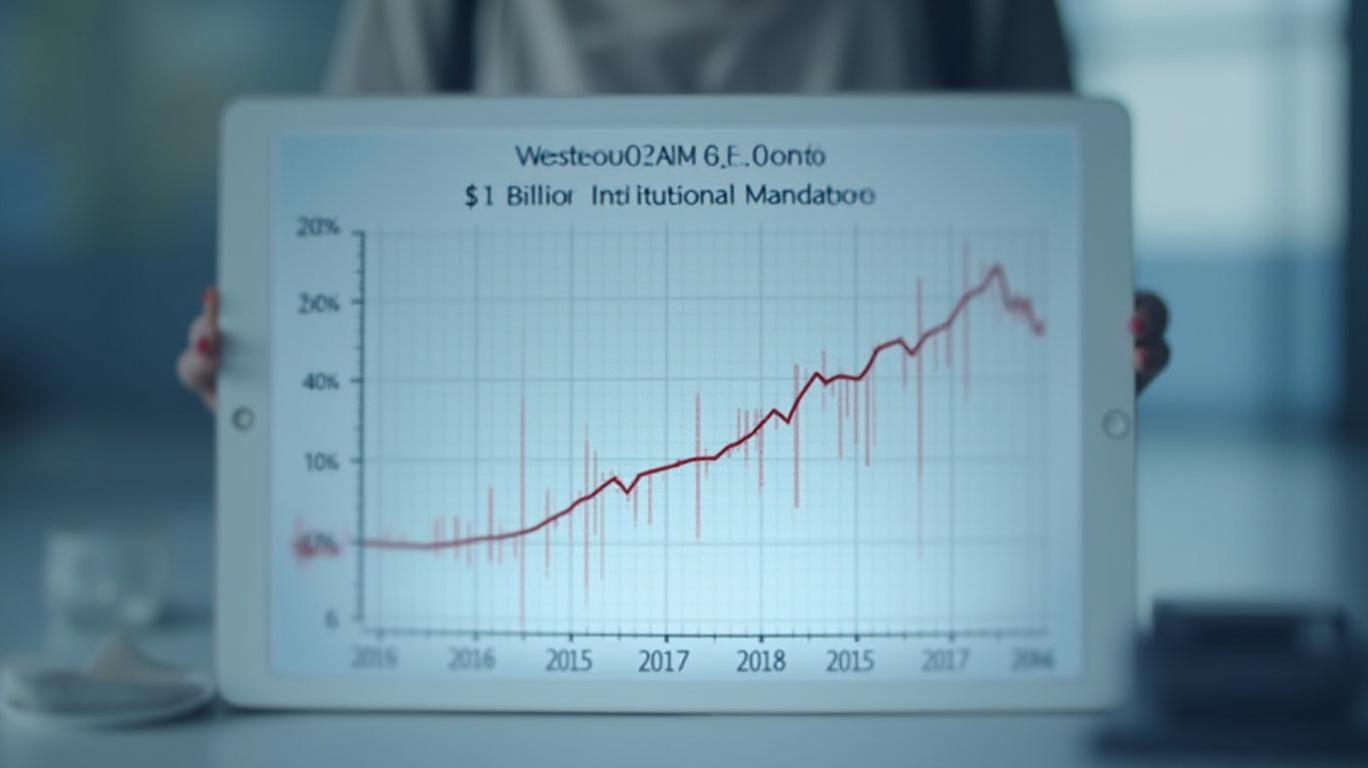Westwood Holdings: Navigating Mixed Results Amid Strategic Growth
Westwood Holdings Group (NYSE: WHG) has reported its first-quarter 2025 results, revealing a nuanced financial picture marked by strategic progress in key areas—such as ETF expansion and mandate wins—coupled with near-term headwinds. The company’s non-GAAP Economic Earnings of $2.5 million ($0.29 per diluted share) underscore operational resilience, even as GAAP metrics faltered. With revenue at $23.3 million, down from the prior quarter but up year-over-year, Westwood’s performance reflects both the challenges of its asset management sector and its deliberate growth strategies.
Financial Performance: A Tale of Two Metrics
Westwood’s Q1 results highlight a divergence between its non-GAAP and GAAP measures. While non-GAAP Economic Earnings rose 17% year-over-year, GAAP net income plummeted to $0.5 million, a stark contrast to the $2.3 million reported in Q1 2024. This discrepancy stems from volatile items such as changes in the fair value of contingent consideration and one-time tax adjustments. Analysts, however, view non-GAAP metrics as more indicative of core performance, given their exclusion of non-cash charges.
The $23.3 million revenue total marked an 8% drop from Q4 2024, driven by lower performance-based fees—a recurring theme in the asset management industry as market volatility dampens fee-based gains. Yet, the year-over-year growth of 2.6% signals stabilization, fueled by higher average assets under management (AUM), which rose to $17.0 billion. This AUM growth, particularly in institutional mandates like the $1 billion sub-advisory win for its Small Cap Value strategy, is a critical pillar of Westwood’s long-term strategy.

Strategic Momentum: ETFs and Channel Strength
Westwood’s recent success lies in its diversification beyond traditional AUM. The launch of the LBRTY Global Equity ETF (BFRE) and the one-year anniversary of its Westwood Salient Enhanced Midstream Income ETF (MDST)—boasting a 10.5% annualized distribution rate—signal progress in its ETF platform. These products cater to investors seeking yield and thematic exposure, positioning Westwood to capitalize on trends in passive investing.
The Institutional and Intermediary channels also delivered strong results. The Intermediary division recorded its best sales quarter since 2022, driven by energy-focused offerings, while the Institutional channel’s mandate wins demonstrate client confidence in Westwood’s investment strategies. CEO Brian Casey emphasized the firm’s focus on “high-quality investments and client-centric solutions,” a theme that resonates in its balanced approach to growth.
Balance Sheet and Dividend Resilience
Westwood’s balance sheet remains robust. Cash and liquid investments totaled $26.9 million as of March 2025, supported by a dividend payout of $0.15 per share—maintained despite quarterly volatility. The absence of debt and a stockholders’ equity of $119.3 million further insulate the company from liquidity risks.
Risks and Challenges
Despite these positives, risks loom. The $14.5 million increase in employee compensation expenses and rising IT costs underscore operational pressures. Meanwhile, the asset management sector faces heightened competition and regulatory scrutiny, which could compress margins further. Westwood’s reliance on performance fees—volatile by nature—adds uncertainty, as seen in Q1’s decline.
Analyst sentiment, as reflected in TipRanks’ AI-driven Spark rating, remains Neutral, with a technical “Sell” signal due to mixed near-term performance. While strategic wins and AUM growth are laudable, investors may question whether Westwood can sustain profitability amid these headwinds.
Conclusion: A Stock for Long-Termists
Westwood Holdings presents a compelling case for investors with a long-term horizon. Its $18.0 billion in total AUM/AUA, strategic ETF expansion, and consistent dividend payouts ($0.15/share) suggest a foundation for growth. The firm’s Institutional and Intermediary sales pipelines, particularly in energy and midstream sectors, offer tangible upside.
However, short-term investors may face turbulence. The drop in diluted EPS to $0.05 from $0.27 a year ago, paired with GAAP net income volatility, signals that profitability remains uneven. For now, the stock’s 15.45% YTD return and low leverage position it as a defensive play in an uncertain market.
In sum, Westwood’s Q1 results are a reminder that in asset management, patience pays. While the company navigates near-term challenges, its focus on diversification, client relationships, and innovative products positions it to outperform over the cycle—if it can stabilize its earnings trajectory. For those willing to look beyond quarterly noise, WHG offers a disciplined entry point into a firm with both defensive qualities and growth potential.


_442a2dcc1749832873286.jpeg)
_e68fac6d1749831664430.jpeg)





